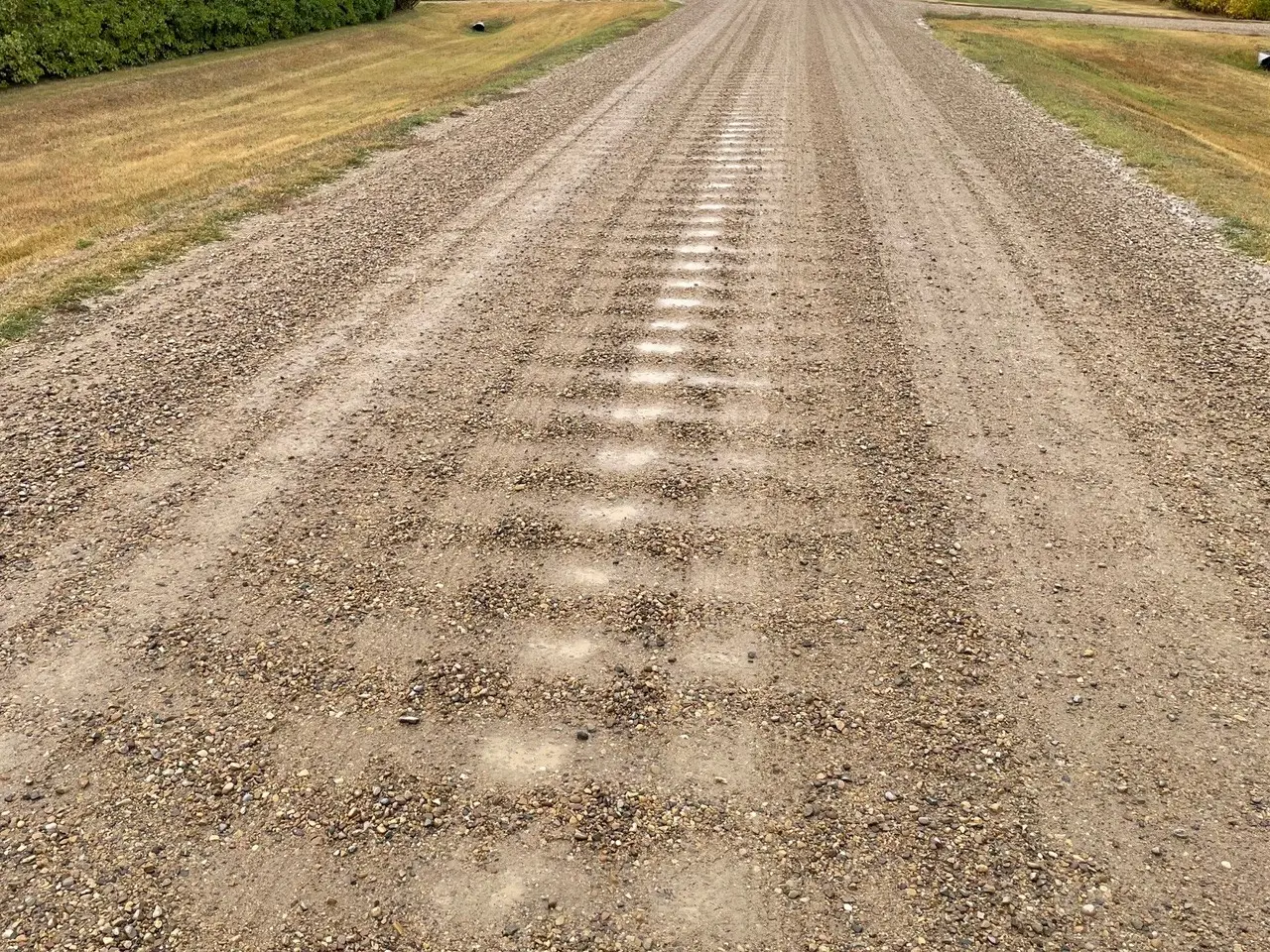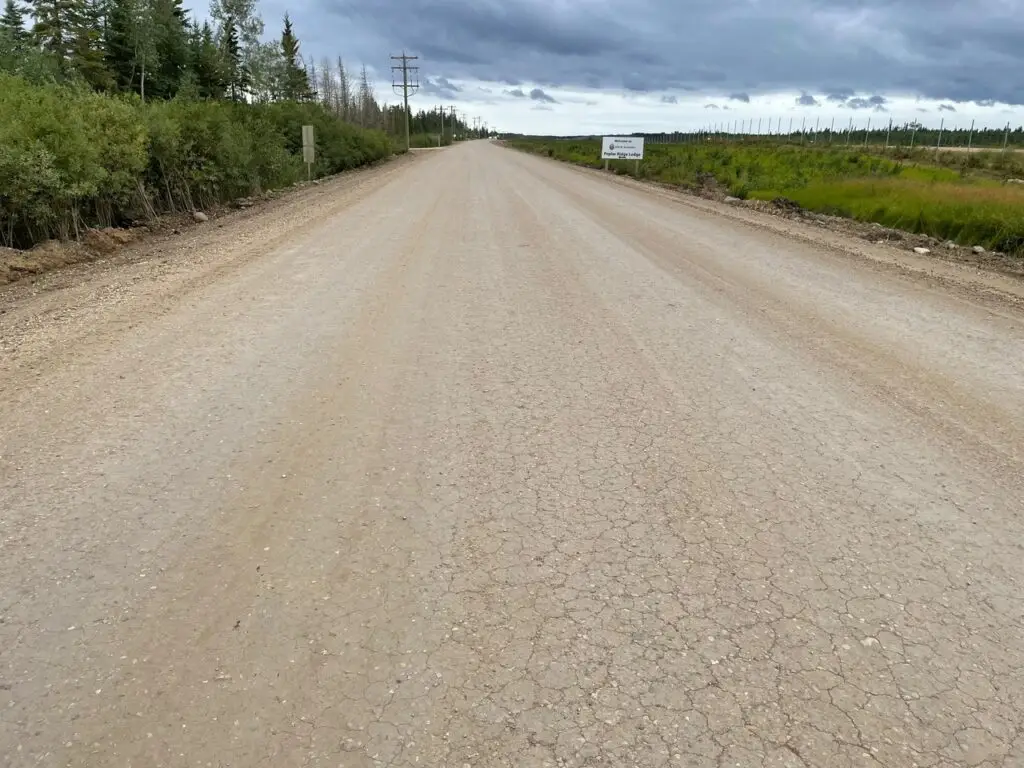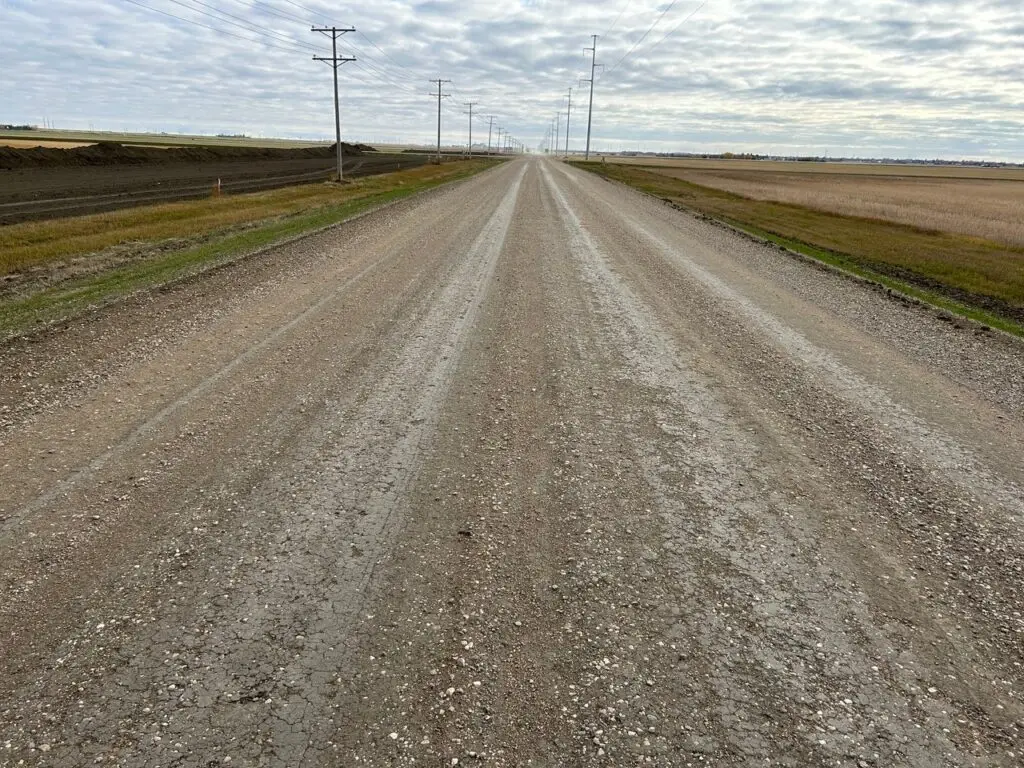If you’ve ever driven down a gravel road and felt that jarring, repetitive bouncing sensation under your tires, you’ve likely encountered a washboard road—also known as road washboard or washboarding road. These evenly spaced ripples might seem harmless at first, but they pose serious challenges for drivers, road safety, and maintenance crews alike. So, what causes them—and how can they be prevented?
What Causes Washboard Roads?
There are four primary causes of washboarding: driving habits, lack of moisture, poor gravel quality, and improper road design—particularly a missing or inadequate crown on the road surface.
Roads impacted by washboard
Vehicle speed is one of the biggest contributors. A study conducted at the University of Toronto found that washboarding develops in a manner similar to how a stone skips across water. When vehicles travel above a certain speed, their tires begin to bounce, creating a hopping motion that gradually forms ripples in the gravel surface. This effect is especially pronounced in areas where vehicles repeatedly accelerate or brake, such as intersections, curves, or hills.
ABS braking and gear shifting further amplify the issue, particularly at intersections or stop signs where vehicles are slowing down abruptly. Anti-lock braking systems (ABS) rapidly engage and release the brakes to prevent skidding, which causes repeated tire-to-road impacts that disturb the gravel surface. Likewise, downshifting or abrupt gear changes when slowing or stopping can create additional surges in torque or wheel resistance, leading to localized pressure points that displace loose material. These repetitive actions churn up the gravel, accelerating the formation of washboard patterns in high-traffic zones.
Dry weather conditions also play a major role. When gravel roads lack moisture, the surface crust loosens, making it easier for traffic to displace the material. Without moisture to bind the particles, the surface becomes unstable and more prone to reshaping. Conversely, excess water without proper drainage can be equally harmful. If a gravel road isn’t built with the correct crown—a slight elevation in the center that allows water to run off—then water pools in low areas, softening the structure and hastening the development of washboarding.
Poor gravel quality further worsens the issue. Gravel that lacks the proper blend of stone, sand, and fines (the smallest particles) won’t compact effectively. When the material can’t bind together, it’s more easily displaced by vehicle tires, allowing surface irregularities to form and worsen over time.
Together, these factors make washboarding an almost inevitable challenge for gravel roads, especially in areas with high traffic volume, inconsistent maintenance, or poor road design.
How Do Washboard Roads Form Over Time?
Washboarding isn’t just caused by a single factor—it’s the cumulative result of road surface conditions, weather, and traffic patterns. When roads are dry, unshaped, or poorly maintained, vehicle tires gradually push loose gravel toward the shoulders and even into ditches. As this process repeats, ripple-like patterns begin to emerge across the driving surface.
These ripples are commonly found:
- Just before and after intersections
- At the base or crest of hills
- On curves where braking or turning is frequent
- All the way up a hill, particularly on steep grades where drivers accelerate or brake throughout the climb
Even maintenance activities like snow plowing and natural forces like rainfall erosion can shift gravel away from the road’s centerline, creating raised berms or shallow ditches along the shoulders that disrupt proper drainage. Without consistent reshaping and compaction, these disturbances worsen over time.
In short, washboarding is not a matter of “if,” but “when.” It forms gradually through the interaction of vehicles, weather, and gravel quality—and without proactive maintenance, it can quickly escalate from a nuisance to a costly repair issue.
How to Prevent and Fix Washboarding
Fixing washboard roads isn’t as simple as grading them smooth. Even when done well, roads can quickly return to a rippled state. Operators must maintain the ideal crown to direct water to shoulders and ditches. But excessive crown can create its own hazards—vehicles may drift toward the shoulder, particularly in snowy or icy conditions, creating additional safety risks. Effective prevention and long-term maintenance require a few key elements:
- A properly crowned road surface to ensure drainage.
- Well-maintained shoulder areas that slope away from the road
- Clean and functional ditches for water flow
- Quality gravel with proper binding characteristics
- Controlled vehicle speeds to reduce bouncing and displacement.
Even with all of these in place, heavy hauling or constant traffic will challenge most gravel roads. Budget constraints often limit how much municipalities can invest in reconstruction, making it critical to get the maintenance right the first time.
Why GRAVELOCK Is a Game-Changer for Washboard Control
At Forus, we’ve worked with nearly every gravel road maintenance method available—and we know that even the best practices can’t stop washboarding entirely. That’s why we recommend GRAVELOCK as a superior long-term solution for managing and preventing washboarding.
GRAVELOCK isn’t just a surface treatment—it reacts with clay in the road material to create a denser, more stable base. GRAVELOCK significantly increases compaction, shear strength, hardness, and load-bearing capacity in clay-based roads, making it far more difficult for washboarding to re-form, even under heavy traffic or harsh conditions.
The stabilization GRAVELOCK provides helps roads resist washboarding, rutting, and pothole formation through freeze-thaw cycles, dry spells, and wet weather. Treated roads require less frequent grading, fewer gravel top-ups, and offer smoother, safer surfaces with improved traction.
It also brings environmental advantages, including reduced material usage, fewer applications, and no runoff. In short, GRAVELOCK helps build better gravel roads—stronger, longer-lasting, and more cost-effective for communities and municipalities alike.
Washboard repaired and treated with GRAVELOCK
Let’s Put an End to Washboard Roads
While common across rural areas and unpaved routes, these evenly spaced ripples aren’t just an inconvenience—they’re a recurring and costly challenge for municipalities, equipment operators, and taxpayers alike.
The real problem isn’t just figuring out how to fix them. It’s understanding that washboarding is inevitable—and managing the damage and expense over time is what really matters.
With smarter maintenance practices, the right materials, and innovative solutions like GRAVELOCK, you can eliminate the frustration of rippled roads and keep your community driving safely.
Ready to build the safest, strongest, and most sustainable roads? Contact Forus today—we’re here to help you build better from the ground up.






